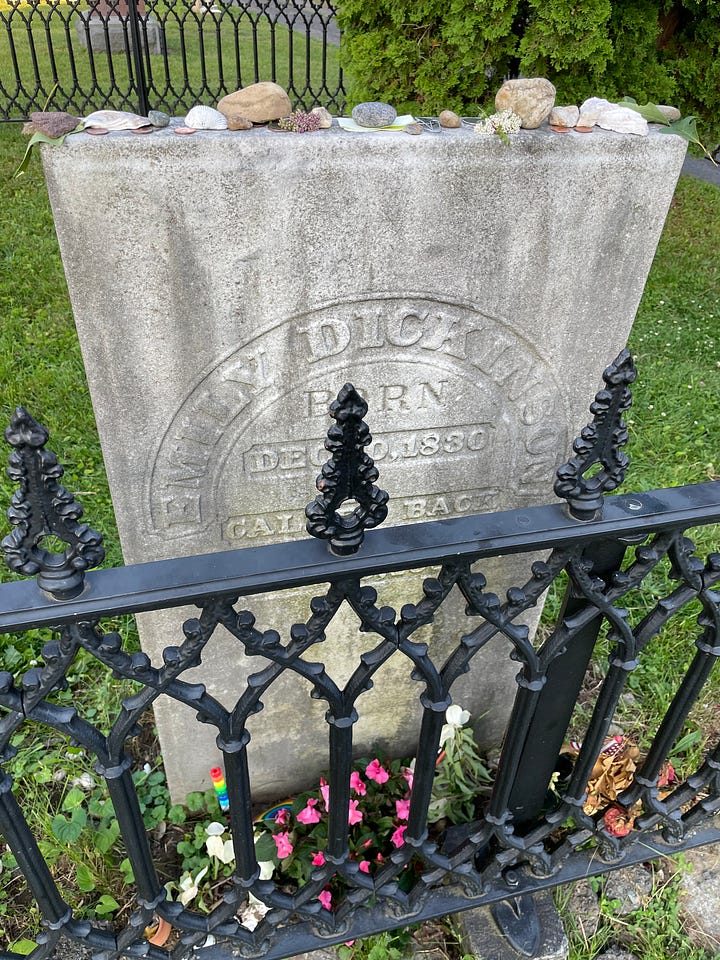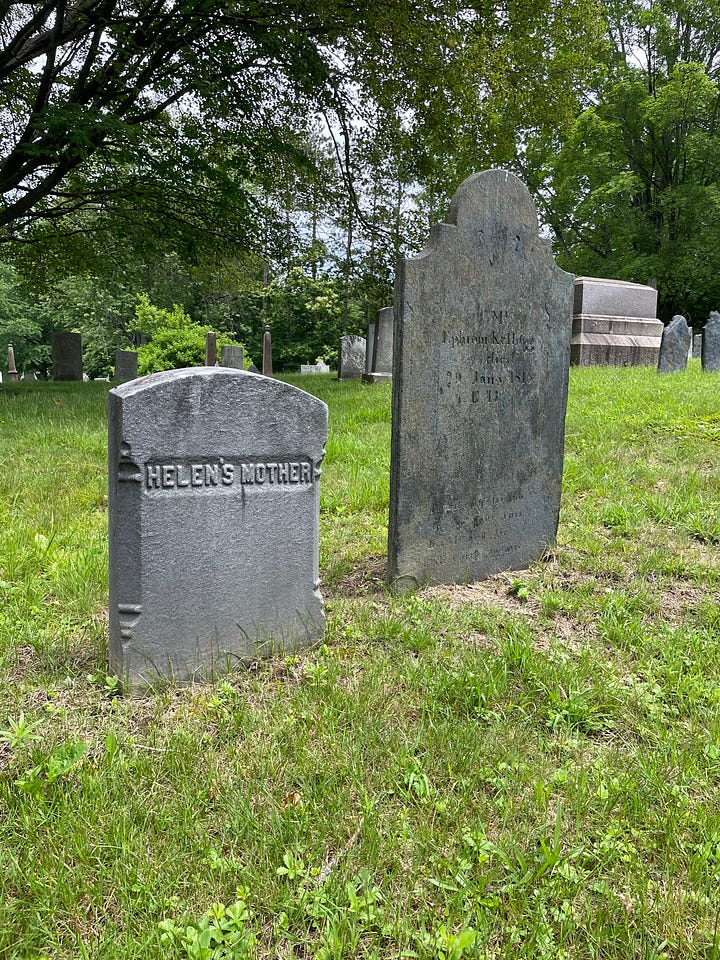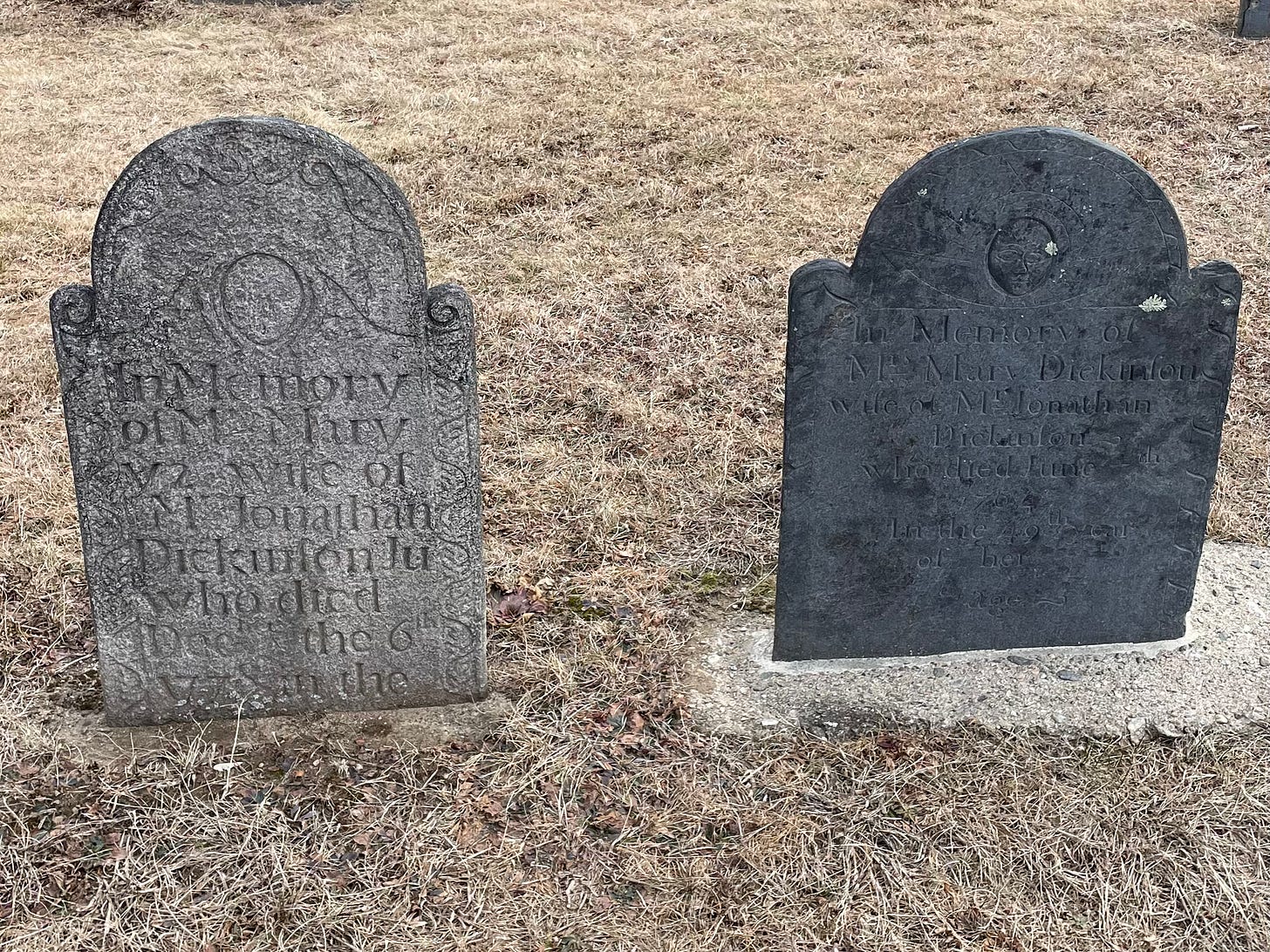If you’d asked me a year ago to give a tour about women buried in Amherst’s West Cemetery, I wouldn’t have considered it a political act. But now, with Trump and his administration on a rampage against history that highlights groups sharing certain characteristics, the idea of giving a tour like this has taken on new significance.
Women’s History Month may have been ordered out of US military, but here on The Silent Sod, we are going to celebrate it! [Edited to add: My sister pointed out that Trump did sign a proclamation on March 6th declaring this month Women’s History Month. The text of the proclamation includes no reference to historical figures and mainly focuses on the administration’s efforts to make people identify by their sex at birth and to bar transgender athletes from sports.]
To this end, I am currently hard at work creating a local Women’s History tour of West Cemetery in Amherst, Massachusetts, which I’m planning to debut to friends and family in a couple of weeks.
What would you want to learn on a Women’s History tour of a cemetery?
Where it started
The idea for this tour sprouted over a year ago when I became fascinated with Orra Hitchcock (1796-1863), a faculty spouse like me, who was the wife of Edward Hitchcock, a professor and president of Amherst College.
Orra was a skilled illustrator and created a lot of materials for Edward to use in the classroom and for his professional publications in geology. Edward had this to say about her in his Reminiscences of Amherst College (1863, p. 392-393):
“Though pressed by the cares of numerous family, rarely, if ever, during forty years, has she turned a deaf ear to my solicitations for drawings. And without these, my scientific labors would have been meagre enough. I had no means for employing a regular, salaried artist, and my own skill at the limner’s art has always been very small. How providential that such a wife should be given me!”
Edward’s reminisces bring up interesting questions about the value of women’s labor. Today, I am horrified that she wasn’t paid directly for her many contributions, but how would Orra have felt about it? Did she consider it a wife’s duty? Was she happy to have an outlet for her artistic expression at a time when many women didn’t have careers outside the home?
From Emily Dickinson to Helen’s Mother
It’s an overused expression, but I do feel like my head is spinning from all the information that I’m trying to synthesize for this tour. The most famous person buried at West Cemetery is the internationally renowned poet Emily Dickinson (1830-1886). I’m excited about contrasting how much we know about Emily’s life (her house museum is a few blocks away) with what we know about someone like Helen’s Mother, whose name doesn’t even appear on her gravestone:


So many Dickinsons
Emily Dickinson may be the most famous Dickinson buried at West Cemetery, but she is by no means the only one. The cemetery isn’t too large (there are 2,541 records associated with the cemetery on Find a Grave), but there are at least 159 Dickinsons. I’m looking forward to sharing the stories of some of the lesser known Dickinson women, like these two Mary’s, who I think were married to the same Jonathan, but it’s hard to figure out because he might have had a third wife named Mary too and his parents were also named Jonathan and Mary.
Dipping a tentative toe in the AI waters
The other thing that I’m experimenting with right now is using Google’s NotebookLM to help me conduct research for this tour. Unlike other AI interfaces like ChatGPT, which base their answers on information available across the internet, NotebookLM allows you to choose the sources that you want to learn from (by uploading or linking to them) and then answers your questions based on these sources.
I definitely want to do a follow up post on my experience of using NotebookLM because I think its representative of the next generation of tools that will become standard for how we research things the future. Like remember before you could Google something? That’s the kind of jump I’m talking about.
Simmering in the stew of local history
I’ve now lived in Amherst for close to two years. At first, I was resistant to becoming too involved in the local history scene because my heart was still in Atlanta where I trained as a cemetery tour guide. Slowly, though, I’ve been acquainting myself with Amherst by attending history talks at the Amherst Historical Society and Amherst College. I’ve gone to exhibitions organized by Ancestral Bridges, a non-profit focusing on the Black and Afro-Indigenous history of the area. I’ve seen history plays by Plays in Place, an organization that develops site-specific theater. I’ve taken cemetery tours led by local historians.
It would have been hard to dive right in and create a tour when I moved here, but having simmered in the stew of local history for awhile, I now recognize many of the faces on the town mural adjacent to the cemetery. And I can’t wait to share their stories!








This will be interesting. As much as you know how i feel about the Orange one, I thought i saw that he actually made an executive orders to officially call this Women's Month? I know because the way the lady talked to him while he signed it gave me the creeps 😆.
I like the idea of doing a women's walk in other cemeteries. I am thinking of Greenwood cemetery in Brooklyn, that had many notable women buried in it.